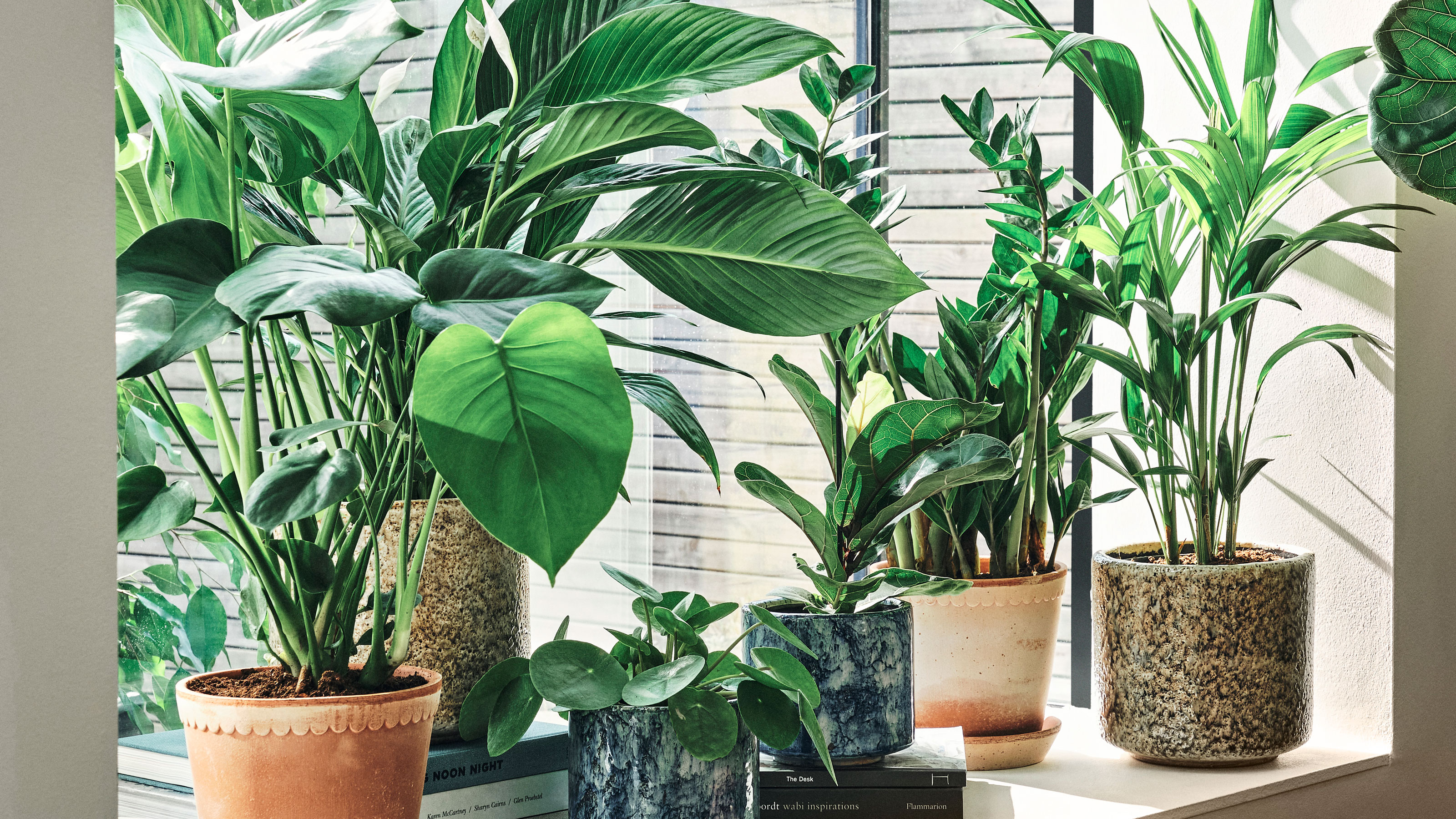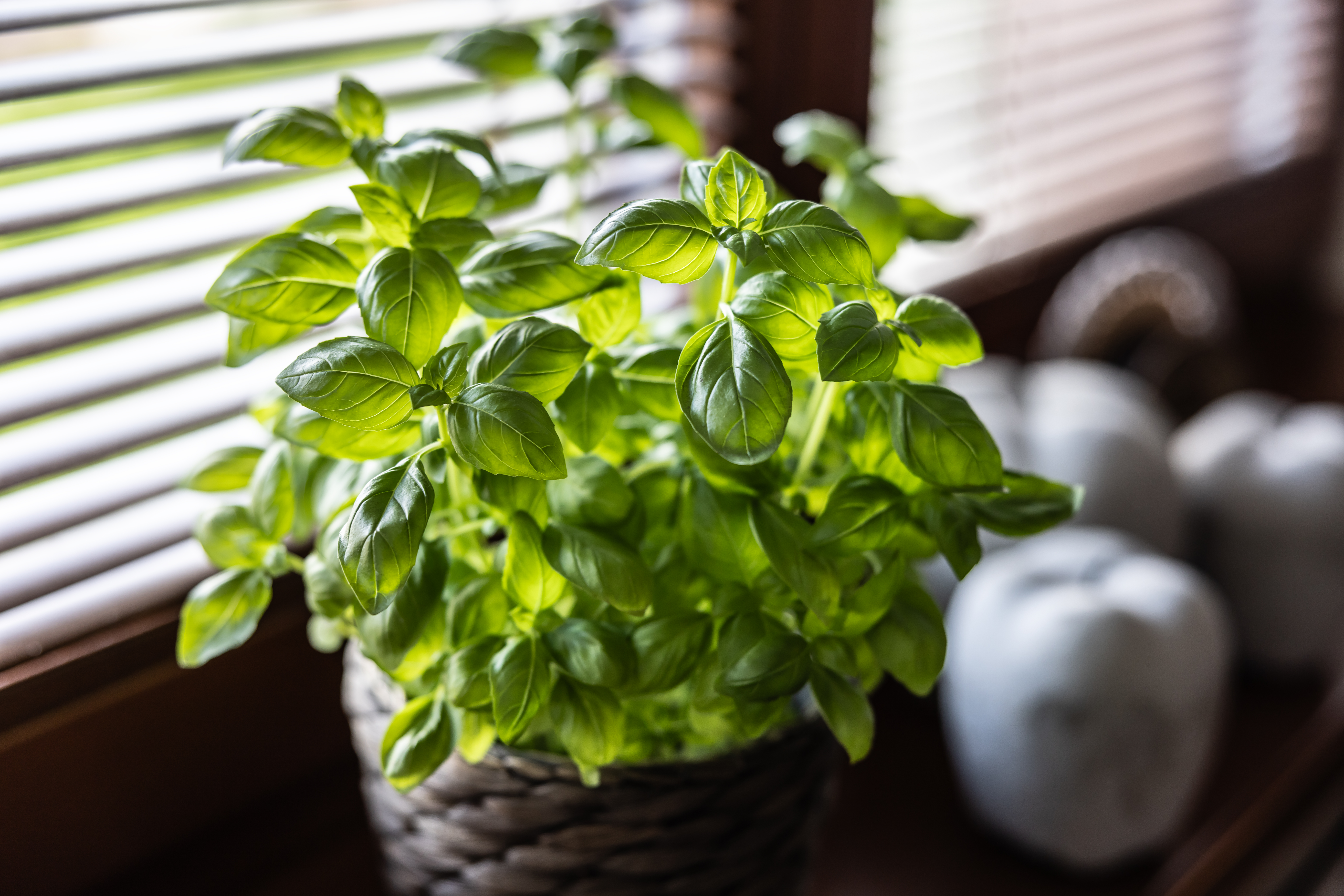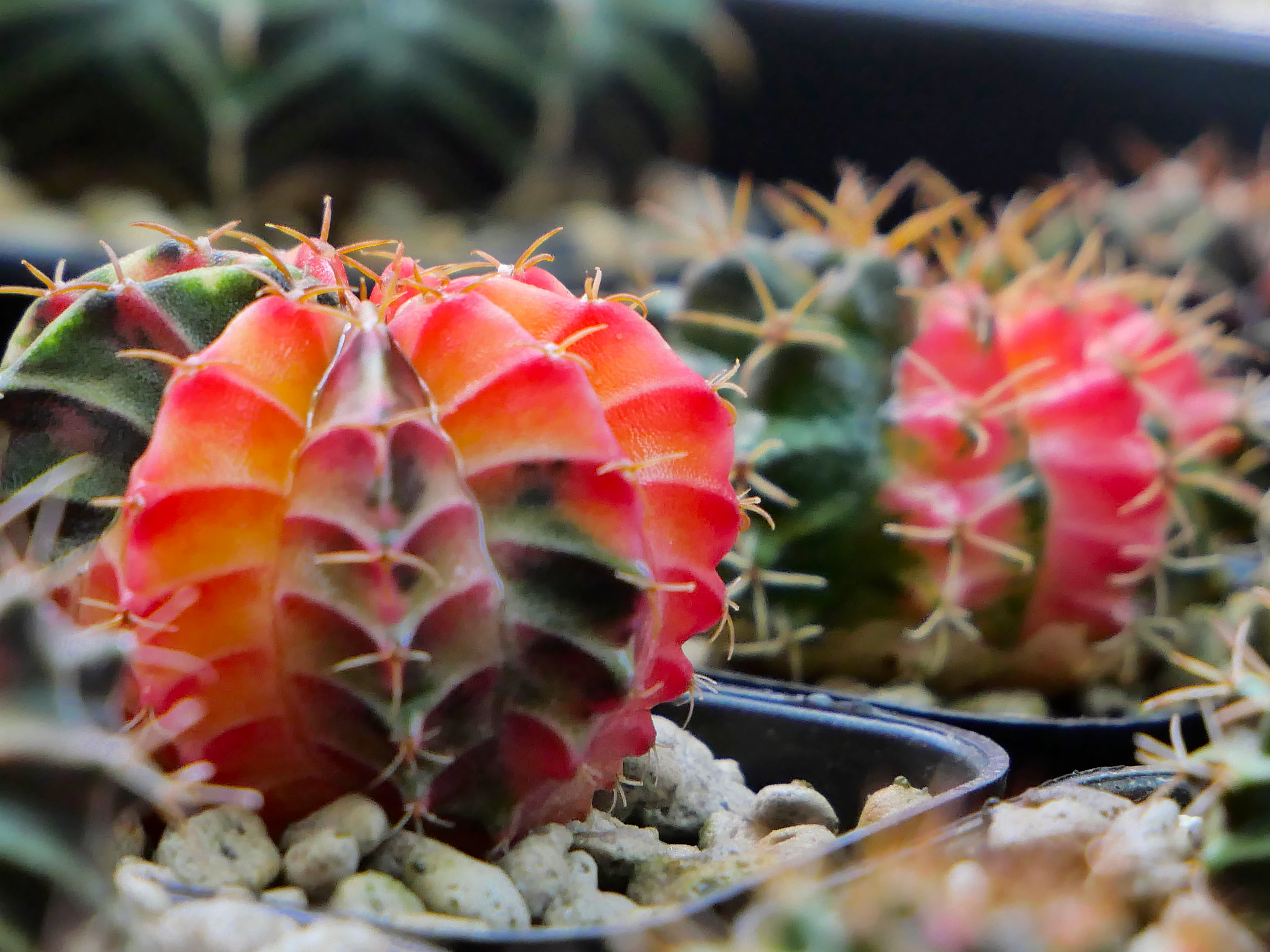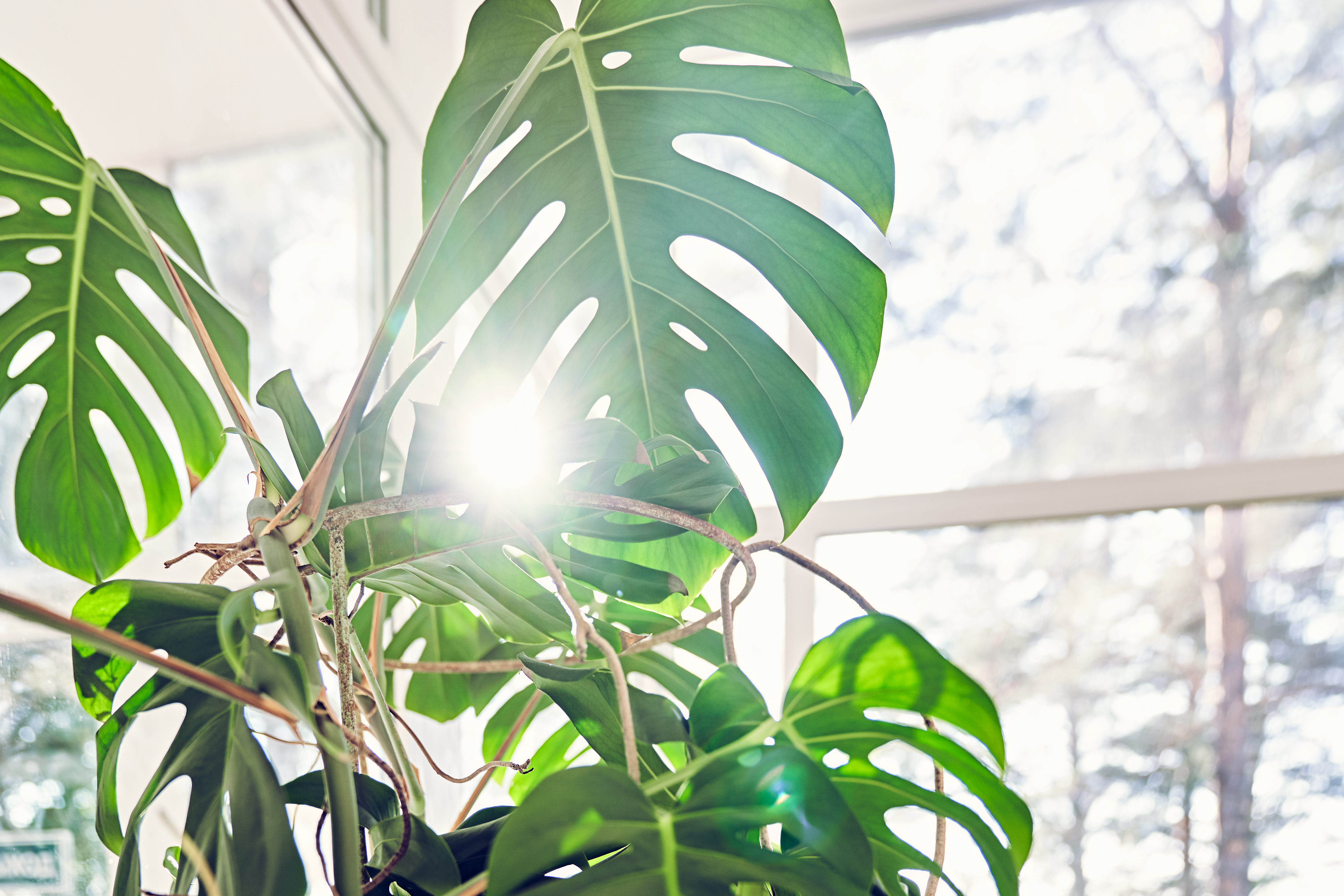
Planning out an indoor garden is fairly easy. But one of the aspects that's commonly overlooked is light requirements. For all you know, figuring out how much sunlight your plants need could actually be the key to breaking your dying houseplant streak.
Some of the most popular houseplants happen to be incredibly sun-loving and depending on the amount of natural light that floods your home, this could be a great advantage or an unfortunate hurdle to your indoor jungle.
For those of you who are blessed with large sunny windows and plenty of empty sill space, these expert-approved hardy houseplants live their best lives in direct sunlight. So if you're looking for some window-side container grows to adopt, why not give one of these chic grows a go?
1. Pencil Cactus

In conversation with Lisa Eldred Steinkopf also known by her online alias 'The Houseplant Guru', she tells us that euphorbia tirucalli, commonly called pencil cactus is at the top of her list of direct sun-loving houseplants. Contrary to its name, Lisa points out that this plant is not a cactus at all, but a succulent.
"It can be a focal point in a home as it has an interesting unsymmetrical shape," she says. "However, it does have a white milky substance in its stems that can irritate the skin so handle it with care." Lisa particularly recommends bringing home the 'sticks on fire' variety that fashions red-tipped stems, especially when in full sun. Direct sun with bright light from a western, eastern or southern facing window will help this gorgeous plant to thrive. And lucky for us, they happen to be a great option for low-maintenance plants for indoor gardening.
Sunlight: Direct Sun
2. Basil (Ocimum basilicum)

The ever so herbaceous basil is a must to add into your indoor zen garden. Aside from its irresistible scent, this plant makes for the perfect kitchen plant. You can pop this precious plant by your windowsill and watch it grow into an abundance of flavour and smell.
This plant needs deep regular watering and needs to be planted in well draining soil.
Sunlight: Full sun
3. Ponytail Palm

Similar to pencil cacti, Lisa explains that ponytail palms are actually not palms at all and are in fact a part of the succulent family. "This plant forms an attractive large above-ground caudex (swollen stem)," she notes. "And the leaves come out of the top of the caudex and week over resembling a 'ponytail'.”
While caring for these beautiful houseplants, Lisa encourages keeping them snug in their pots and advises against frequent up-potting. And if you see the leaves flopping, she points out that this is likely a sign that it's not receiving enough light. "Since it's a succulent, it's best to let it dry down before watering," she says. "It stores water in its caudex so it can tolerate drying out." To get the best of out this plant, ensure you place it somewhere that receives bright light, rather than direct sun — too much direct sun may cause the plants growth to slow down.
Sunlight: Full to Partial Sun
4. Moon Cactus (Gymnocalycium mihanovichii)

Unique in its own way, the moon cacti with its ravishing colorful top loves to be under the sun. Adding this plant into your home is also a great way of decorating with cacti.
This plant comes in a range of colors including white, orange, yellow, red and purple. To get the best out of this plant it needs direct sunlight for a few hours per day. It also loves warmer weather conditions, minimal amounts of watering and lots of sunlight.
Sunlight: Direct sun
5. Coral Cactus

Coral cactus, also known by its plant name Euphorbia lactea 'Cristata', that mimics the shape of a tree with its alluring appearance. This plant is easy to grow and is low maintenance and will certainly look dreamy amongst a succulent indoor garden, or as a container plant on your patio.
Sunlight: Bright light with some full sun
6. Crown of Thorns

Whether you grow this plant outside in your garden or indoors in a pot, crown of thorns is one of the prized indoor plants that flower all year round and the one thing it needs to thrive is sunshine. While its stipular spines might have you connecting it to cacti, it's actually another succulent. Clearly the succulent family is one that blossoms in the face of direct sun and crown of thorns might just be our favorite.
"It needs full sun to do its best and will be in flower almost constantly," says Lisa. The key to keeping this plant alive is to make sure it recieves adequate watering as and when needed. This simple step will make sure that the crop doesn't wither away and lose it's pretty pink blooms.
Sunlight: Full sun to Partial shade
7. Tree Aeonium (Aeonium arboreum)

Aeonium arboreum, or the Tree Aeonium, loves to sit in full sun. It's beautiful leaves that craft into the shape of petals flowering outward is a popular choice in many homes. This plant may need a little more watering than other succulents, but make sure you do not overwater it as this can lead to root rot and disease.
The evergreen succulent and its showy leaves can grow in dry to medium moisture and well drained soils. However it can tolerant some shade and is one of the unique plants that grow in poor soil.
Sunlight: Full sun
These plants all come highly recommended by Lisa The Houseplant Guru as some of the best additions to a bright and or sunny indoor garden.
These plants are a beginner gardener's dream. And don't worry about the cooler months that don't bring in as much bright light or sun, as you can always get them under some grow lights for year-round success.
FAQs
What's the difference between direct and indirect sunlight?

When picking your houseplants, it's important to understand their individual light requirements. And in doing so, we find that discerning the difference between direct and indirect light can help ensure that each plant is getting the love it needs.
Typically, direct light refers to an unobstructed stream of sunlight, so if your plant is simply sitting by a clear window, that would be considered as a directly sunny spot. On the other hand, if the sunlight is filtered or diffused on its path to the plant, then that would be considered as indirect.
What is the best direction for windows for indoor plants?

When it comes to a sun-loving indoor garden, you're going to want to treat it to as much natural light as you can. And if you have the liberty to pick from a bunch of rooms with varied window orientations, then we recommend prioritizing east or west-facing windows for ideal exposure.
These windows tend to receive the most amount of natural sunlight and will likely be the perfect setting for your houseplants to thrive in. And on the flip side, you can leave the less sun-hardy plants for the north and south-facing windows in your home.







